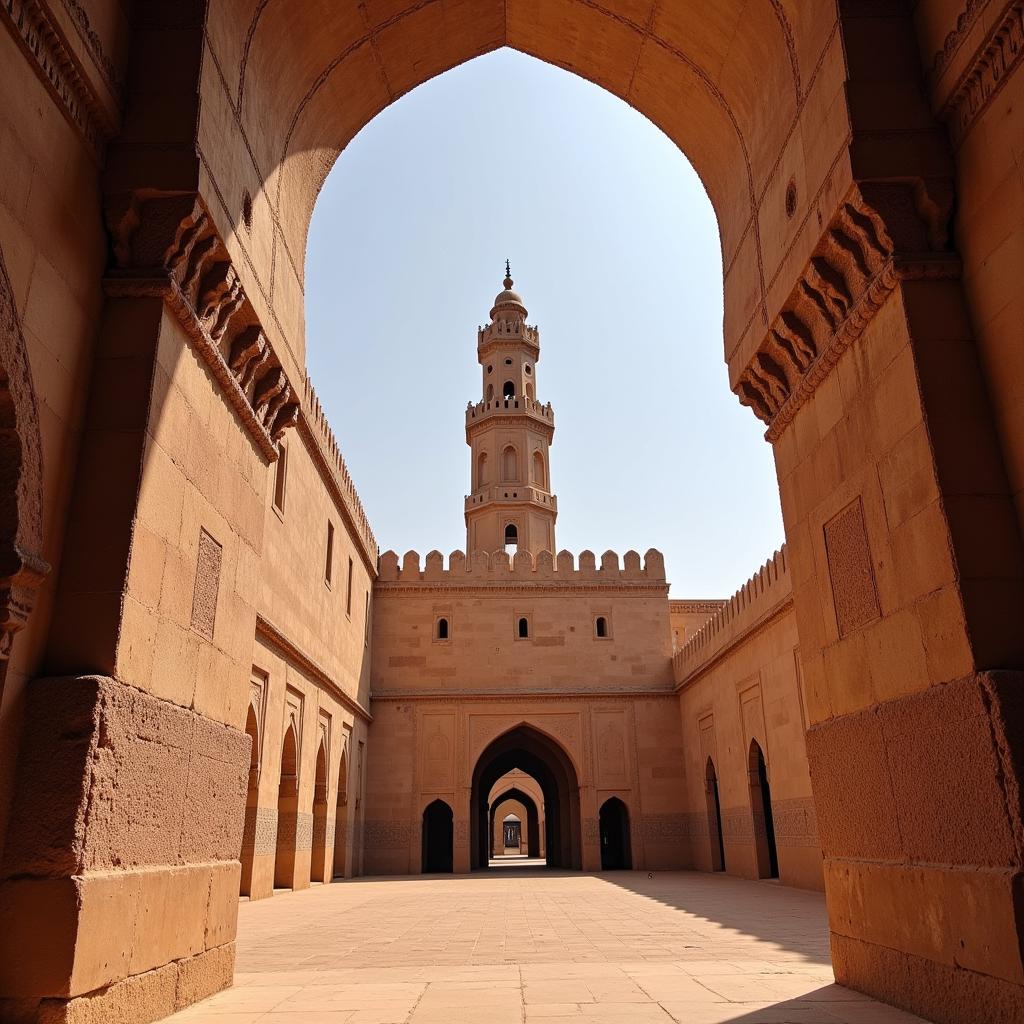African Architecture: Evolution and Transformation
African architecture has undergone a fascinating evolution and transformation, influenced by a diverse range of factors from climate and available resources to cultural beliefs and historical events. This journey through time reveals not only the ingenuity and adaptability of African builders but also the rich tapestry of the continent’s cultural heritage. We’ll explore the diverse architectural styles that have shaped the African landscape, from ancient mud-brick structures to modern skyscrapers.
Ancient Architectural Marvels: A Foundation of Ingenuity
Early African architecture demonstrates a remarkable understanding of local materials and environmental conditions. Consider the Great Mosque of Djenné in Mali, a magnificent testament to earthen architecture, rebuilt numerous times throughout history using traditional techniques.  The Great Mosque of Djenné in Mali, a prime example of earthen architecture. The use of readily available materials like mud, clay, and thatch allowed communities to create structures that were both functional and aesthetically pleasing, perfectly suited to their environment. Similarly, the rock-hewn churches of Lalibela in Ethiopia, carved directly into the mountainside, represent another feat of ancient African engineering and artistry. These structures serve as enduring reminders of the continent’s rich architectural past and the innovative spirit of its people. Ancient kingdoms like Kush and Axum also left behind impressive stone structures, pyramids, and obelisks, showcasing their advanced knowledge of construction.
The Great Mosque of Djenné in Mali, a prime example of earthen architecture. The use of readily available materials like mud, clay, and thatch allowed communities to create structures that were both functional and aesthetically pleasing, perfectly suited to their environment. Similarly, the rock-hewn churches of Lalibela in Ethiopia, carved directly into the mountainside, represent another feat of ancient African engineering and artistry. These structures serve as enduring reminders of the continent’s rich architectural past and the innovative spirit of its people. Ancient kingdoms like Kush and Axum also left behind impressive stone structures, pyramids, and obelisks, showcasing their advanced knowledge of construction.
The Impact of External Influences: Colonialism and Beyond
Colonialism significantly impacted African architecture, introducing European styles and construction methods that often clashed with existing traditions. Many cities across the continent bear the architectural imprint of their colonial past, with buildings reflecting European aesthetics. However, this period also saw the emergence of hybrid styles, blending indigenous and foreign elements. The introduction of new materials like concrete and steel also transformed the urban landscape. This architectural fusion created unique structures that reflect a complex interplay of cultural influences. Think of the blend of Swahili and Portuguese architecture found in coastal towns like Mombasa and Zanzibar, where ornate balconies and carved doors meet coral stone walls.
The Rise of Modern African Architecture: Embracing Innovation and Identity
Modern African architecture strives to balance global trends with local needs and cultural identity. Architects are increasingly incorporating sustainable practices and utilizing locally sourced materials to create environmentally friendly and culturally relevant designs. There’s a growing emphasis on creating buildings that are not only functional but also reflect the unique character of their surroundings.
“Modern African architecture isn’t about mimicking Western styles,” says Dr. Amina Omar, a leading architect based in Nairobi. “It’s about finding innovative solutions that address local challenges while celebrating our rich cultural heritage.”
Preserving the Past, Shaping the Future: African Architecture in the 21st Century
The 21st century presents exciting opportunities for African architecture. As cities grow and populations expand, there’s a growing need for affordable and sustainable housing solutions.  Sustainable housing projects promoting community development in Africa. The challenge lies in finding ways to meet these demands while preserving the continent’s rich architectural heritage and fostering local talent.
Sustainable housing projects promoting community development in Africa. The challenge lies in finding ways to meet these demands while preserving the continent’s rich architectural heritage and fostering local talent.
“The future of African architecture lies in empowering local communities and embracing sustainable practices,” adds Dr. Omar. “We need to create spaces that are not only functional but also enhance the lives of the people who use them.”
african american culture today& 39
What Drives the Evolution of African Architecture?
African architecture’s evolution is shaped by climate, resources, cultural traditions, and historical events.
How has Colonialism Impacted African Architecture?
Colonialism introduced European styles, leading to both conflict and fusion with traditional architecture.
What Characterizes Modern African Architecture?
Modern African architecture blends global trends with local needs and cultural identity, often emphasizing sustainability.
Conclusion
The evolution and transformation of African architecture tells a compelling story of ingenuity, adaptation, and cultural exchange. From ancient marvels to modern masterpieces, the continent’s built environment reflects a dynamic interplay of tradition and innovation. As we move forward, the challenge lies in preserving this rich legacy while embracing sustainable solutions that meet the needs of a rapidly changing world. African architecture, in its diverse forms, continues to evolve, shaping the continent’s landscape and reflecting its vibrant cultural identity.
african countries and their capitals
FAQ
- What are some examples of ancient African architecture? Examples include the Great Mosque of Djenné, the rock-hewn churches of Lalibela, and structures from the kingdoms of Kush and Axum.
- How did colonialism affect African architecture? Colonialism introduced European styles, leading to a mix of traditional and foreign elements.
- What are some key features of modern African architecture? Modern African architecture focuses on sustainability, local materials, and reflecting cultural identity.
- What are the challenges facing African architecture today? Challenges include balancing rapid urbanization with preserving heritage and promoting sustainable practices.
- What are some future trends in African architecture? Future trends emphasize sustainable development, community-focused designs, and empowering local architects.
- What is the significance of earthen architecture in Africa? Earthen architecture demonstrates sustainable practices and adaptation to local climates.
- How can I learn more about African architecture? Explore online resources, visit museums, and read books about architectural history and contemporary trends.
When you need support, please contact us by phone: +255768904061, email: kaka.mag@gmail.com or visit us at Mbarali DC Mawindi, Kangaga, Tanzania. We have a 24/7 customer service team.